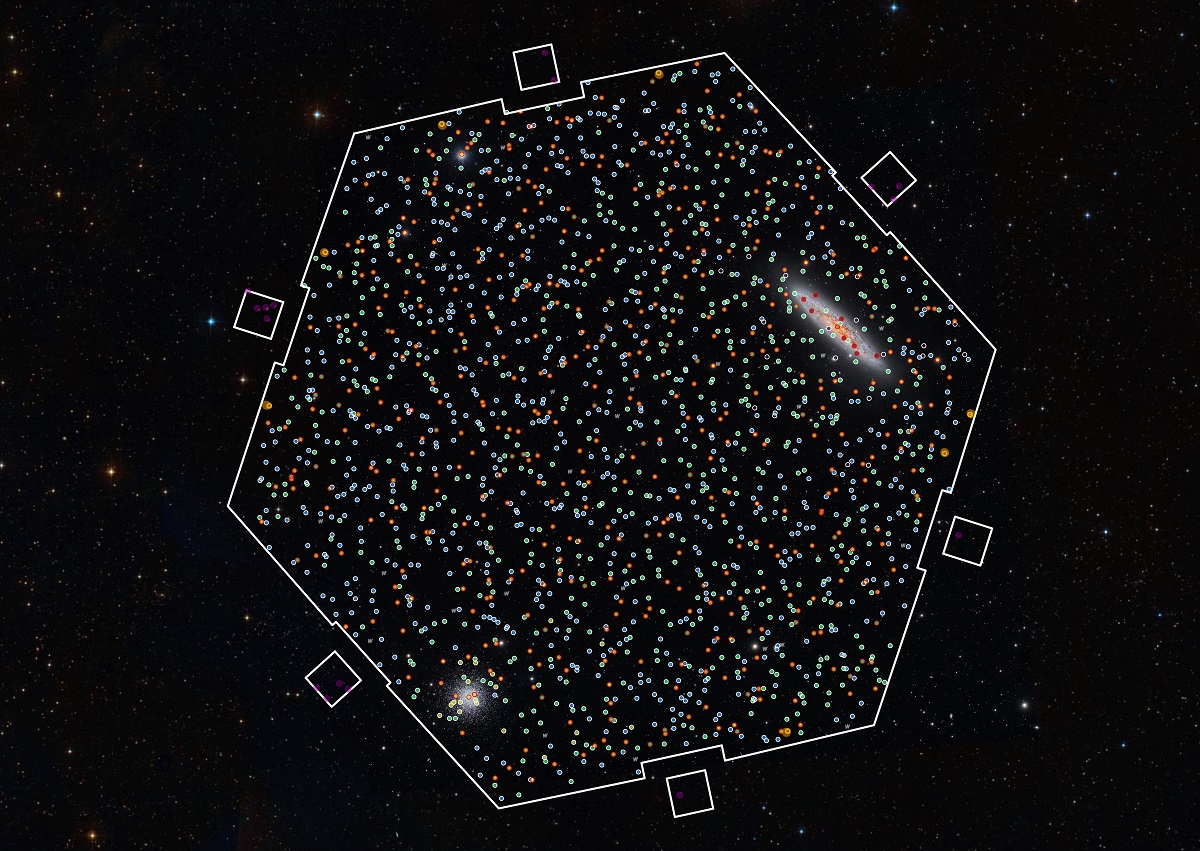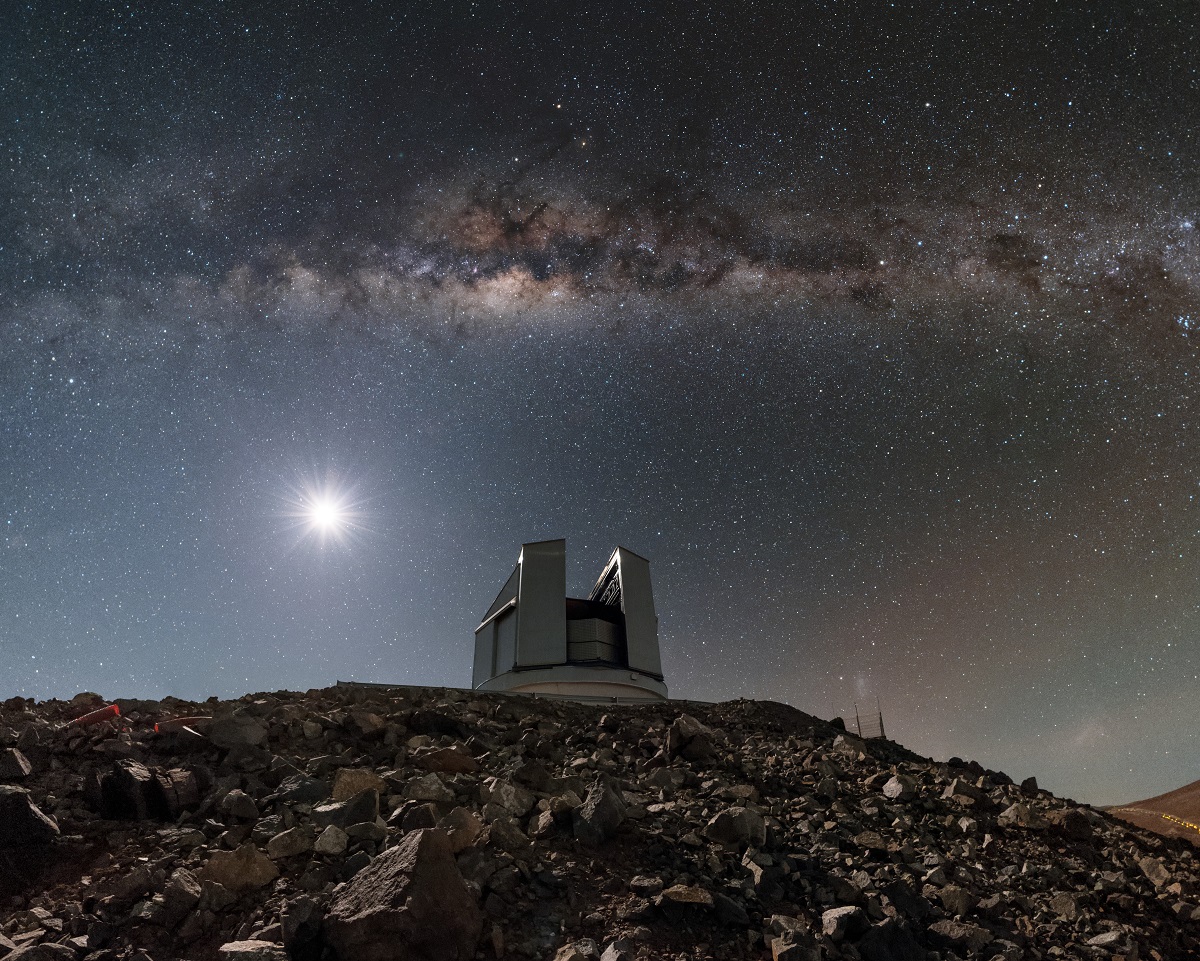The first light of the 4MOST telescope marks the beginning of the observation of 77,000 binary stars
- Located at the European Southern Observatory in Chile, the telescope captured its first light on 18 October—a milestone that marks the start of scientific programmes from around the world
- Alberto Rebassa, researcher at the Universitat Politècnica de Catalunya (UPC) and member of the IEEC, together with Odette Toloza, researcher at the Universidad Técnica Federico Santa María (USM) in Chile, lead an international team that will study the spectra of these stars
- The research fields of 4MOST include the origin of chemical elements and the formation of the first stars, the growth of the Milky Way, the formation and evolution of galaxies and black holes, the composition of dark matter, and the nature of dark energy

The first light captured on 18 October by the 4-metre Multi-Object Spectroscopic Telescope (4MOST) marks the beginning of the scientific journey of this instrument, installed on the VISTA telescope (Visible and Infrared Survey Telescope for Astronomy) of the European Southern Observatory, located at Cerro Paranal, Chile.
A team from the Universitat Politècnica de Catalunya – BarcelonaTech (UPC), including members of the Institute of Space Studies of Catalonia (IEEC — Institut d’Estudis Espacials de Catalunya), together with the Universidad Técnica Federico Santa María (USM) in Chile, will lead a research project to analyse the spectra of 77,000 binary stars.
A binary star is a system formed by two stars that are physically bound and orbit each other. One type of binary system consists of a Sun-like star and a white dwarf—the most common archetype of a stellar remnant, that is, what remains at the final stage of a star’s life.
At present, however, only a few thousand spectra of such binary stars are available, despite their great scientific value. Studying these systems makes it possible to address key scientific questions, such as the relationship between age and metallicity in our galaxy—essential for understanding how the Milky Way formed and how it has evolved chemically over time—the evolution of compact binary stars, and the physical and magnetic properties of Sun-like stars.
This is the main objective of the research led by Alberto Rebassa, researcher of the Astronomy and Astrophysics Group, lecturer at the Castelldefels School of Telecommunications and Aerospace Engineering (EETAC) of the UPC and member of the IEEC, and Odette Toloza, researcher at USM in Chile.
The UPC team also includes researchers Santiago Torres (also from the IEEC), Roberto Raddi and María Eugenia Camisassa, both Ramón y Cajal fellows, as well as PhD students Enrique Miguel García Zamora and Aina Ferrer i Burjachs. The full team is made up of around thirty researchers from 18 institutions and universities across the United Kingdom, Germany, Chile, China, Italy, and the United States.
According to Alberto Rebassa, “It’s incredibly exciting to see 4MOST reach its first light. Many people have dedicated years of hard work to get us here, and it’s deeply rewarding to see it all come together.” He adds: “The scope of the science that 4MOST will enable is truly impressive, and I’m confident that the data will drive a real revolution in astronomy. Personally, I can’t wait to start collecting spectra from our target systems and to see what new discoveries await us.”
First light of the 4MOST telescope
In this first observation, the instrument analysed the light from a range of cosmic objects, with the Sculptor Galaxy and the globular cluster NGC288 among the most notable. For each observed object, 4MOST collected a spectrum, which will make it possible to study properties such as chemical composition and temperature.
The 4MOST telescope is the largest multi-object spectroscopic survey facility in the Southern Hemisphere—unique for its combination of a wide field of view, the number of objects observed simultaneously, and the range of spectral colours recorded at once. 4MOST can disentangle the light from 2,400 celestial objects simultaneously into 18,000 colour components, allowing for detailed studies of their composition and chemical properties.
To achieve this, 4MOST uses 2,438 optical fibres, each about the thickness of a human hair. The light collected by each fibre is transmitted to spectrographs, which split it into its different colours. Its large optical camera lens system, nearly one metre in diameter, provides a field of view on the sky of 2.5 degrees across—five times the apparent diameter of the Moon and one of the largest in the world for a telescope of this kind.
The telescope’s research areas include the origin of chemical elements and the formation of the first stars, the growth of the Milky Way over cosmic time, the formation and evolution of galaxies and black holes, the composition of the invisible dark matter thought to make up most of the mass of galaxies, and the nature of dark energy, which drives the accelerated expansion of the Universe. By analysing the detailed colours of thousands of objects every 10–20 minutes, 4MOST will create a vast catalogue of temperatures, chemical compositions, velocities, and other physical parameters for tens of millions of objects across the southern sky.
The 4MOST facility has been designed, built, and will be scientifically operated by a consortium of 30 universities and research institutes in Europe and Australia, led by the Leibniz Institute for Astrophysics Potsdam (AIP). Development began in 2010, and the telescope is expected to operate for at least the next 15 years. In its first five years, 4MOST will carry out 25 international scientific programmes, including the project led by Professor Alberto Rebassa.

Contacts
IEEC Communication Office
Castelldefels, Barcelona
E-mail: comunicacio@ieec.cat
Lead Researcher at the IEEC
Alberto Rebassa
Institute of Space Studies of Catalonia (IEEC)
Universitat Politècnica de Catalunya (UPC)
E-mail: rebassa@ieec.cat
About the IEEC
The Institute of Space Studies of Catalonia (IEEC — Institut d’Estudis Espacials de Catalunya) promotes and coordinates space research and technology development in Catalonia for the benefit of society. IEEC fosters collaborations both locally and worldwide and is an efficient agent of knowledge, innovation and technology transfer. As a result of more than 25 years of high-quality research, done in collaboration with major international organisations, IEEC ranks among the best international research centres, focusing on areas such as: astrophysics, cosmology, planetary science, and Earth Observation. IEEC’s engineering division develops instrumentation for ground- and space-based projects, and has extensive experience in working with private or public organisations from the aerospace and other innovation sectors.
The IEEC is a non-profit public sector foundation that was established in February 1996. It has a Board of Trustees composed of the Generalitat de Catalunya, Universitat de Barcelona (UB), Universitat Autònoma de Barcelona (UAB), Universitat Politècnica de Catalunya · BarcelonaTech (UPC), and the Spanish Research Council (CSIC). The IEEC is also a CERCA centre.
